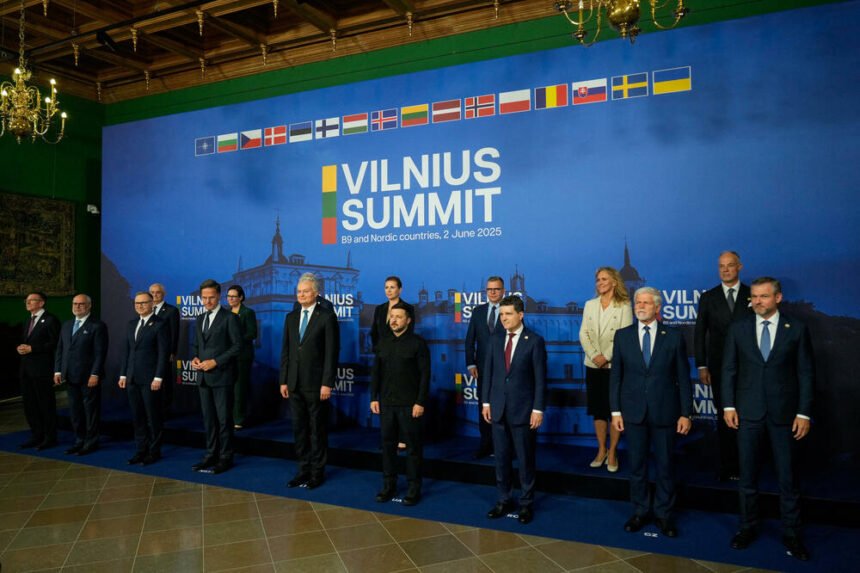As populism sweeps across Europe, the Nordic and Baltic states are steadily building a bastion of stability, security, and unwavering support for Ukraine. This alliance, known diplomatically as the Nordic-Baltic Eight (NB8), is increasingly vital to Western resolve, combining democratic security, defense integration, and societal resilience.
Comprising Denmark, Estonia, Finland, Iceland, Latvia, Lithuania, Norway, and Sweden, the NB8 was established in 1992 after the Cold War. It began as a forum for wealthy Nordic nations to reconnect with their Baltic neighbors, long isolated under Soviet rule. Since Russia’s 2022 invasion of Ukraine, the NB8’s significance has grown in a new geopolitical era where the Arctic, North Atlantic, and Baltic Sea are strategic flashpoints.
A Geopolitical Anchor Amidst Shifting Tides
“The world is changing rapidly… the most important thing is for Europe to re-arm itself,” stated Danish Prime Minister Mette Frederiksen, the current NB8 chair. Her comments underscore a shift in Denmark’s stance, no longer seeing itself as a “frugal” nation opposing increased EU spending. With Denmark set to assume the rotating presidency of the Council of the European Union in July, the Nordic region’s visibility will further increase.
While national-populist politicians have gained ground in Central Europe, leading to skepticism towards the EU and less support for Ukraine, the Nordic and Baltic countries remain a stronghold of support for Kyiv and for European and NATO defense efforts. This commitment persists even as their own migration policies have tightened under populist pressure.
NB8 countries were early members of the French-British “coalition of the willing,” formed to provide military and political support to Ukraine when President Donald Trump suspended American aid. Frederiksen explains that these nations view Ukrainian independence and the defeat of Russian aggression as vital to their own interests, given their geographic proximity to Russia.
Total Defense Model and Regional Integration
Both NATO and the EU are increasingly looking to Finland and Sweden’s “total defense” model, which integrates public and private sectors, as well as civil society, in preparing for military defense, civil readiness, and economic resilience against Russian and Chinese hybrid warfare tactics. This comprehensive societal approach offers valuable lessons.
For instance, Finland, with a population of 5.6 million and only 24,000 active armed forces personnel in peacetime, can rapidly mobilize a wartime army of 180,000 soldiers and maintains a reserve of 870,000 trained personnel, thanks to mandatory military service and regular reserve exercises. Business leaders often serve as military reservists, attending security seminars and having legal obligations to maintain stockpiles, share logistical infrastructure, and ensure reserve production capacities for crises. Having fought two wars with the Soviet Union in the 1940s, Finland maintains enough well-equipped shelters for its entire population in case of bombing.
Last year, Sweden sent an updated brochure to five million households, advising citizens how to act “in case of crisis and war,” including storing non-perishable food, having battery-powered radios and flashlights, first-aid kits, and other necessities. The European Commission recently recommended that all member states take similar steps to prepare their populations for possible emergencies.
NB8 members regularly consult before NATO and EU meetings (though Norway and Iceland are not EU members) and coordinate their diplomacy worldwide. Symbolically, the five Nordic countries share an ambassador complex and cultural center in Berlin, the capital of Europe’s largest economy.
A Reliable Partnership and Future Challenges
In Europe’s increasingly complex energy and security landscape, the Nordic and Baltic allies benefit from being stable, like-minded democracies with broad consensus in supporting defense and deterrence against Russia. This makes them reliable partners for German Chancellor Olaf Scholz, especially as Poland faces political instability, France struggles with a lack of parliamentary majority and debt, and Italy hesitates to bolster its defense efforts.
All eight states have linked their armed forces with the United Kingdom and the Netherlands through the Joint Expeditionary Force, maintaining units high in readiness trained for rapid response in crisis situations. They collaborate with NATO on protecting vital undersea cables and pipelines from Russian and Chinese attempts at sabotage.
Some members have gone further in defense integration. For example, the four Nordic air forces this year formed a Nordic Division within NATO, tasked with implementing the Nordic Air Power Concept, which allows Danish, Finnish, Norwegian, and Swedish squadrons to operate as a unified force in full-scale, high-readiness operations. The three Baltic states are building a joint defense line on their eastern borders, modeled after Ukrainian front lines. Additionally, the Baltic countries are considering the Estonian concept of a “Baltic drone wall,” which would use artificial intelligence and sensors to monitor borders and protect against drones.
Despite demonstrating significant strength, the influence of the NB8 has its limitations. Small, open economies depend on free trade and a stable global environment for their prosperity. Within the EU, this group failed to prevent the European Commission from easing rules on state aid control, which allowed for larger subsidies to French and German industries. More broadly, a world shaped by tariffs, lack of climate action, illiberalism, and great power spheres of influence presents a toxic scenario for the Nordic and Baltic countries.
Growing protectionism and instability could mark a fateful moment for northern Europe.







